New technology spurs new requirements in the latest edition of NFPA’s inspection, testing, and maintenance standard
The National Fire Protection Association (NFPA) refers to its standards as living documents, continuously adding new ways to keep people safe in an ever-evolving world. Innovation in fire safety technology is constant, and the most significant changes to the 2020 edition of NFPA 25: Standard for the Inspection, Testing, and Maintenance of Water-Based Fire Protection Systems are new requirements aimed at ensuring technologies function as intended.
In this blog, we examine key changes to NFPA 25 2020, including:
- The first-ever definition and ITM requirements for electrically operated sprinklers
- Expanded requirements for automated testing of waterflow alarm devices
- Stopping ITM professionals from opening energized pump controllers for safety reasons
- Clearer guidance for handling recalled sprinklers
- Other notable changes, including longer dry sprinkler testing intervals and ITM requirements for dry hydrants
Need to keep your water-based fire protection system up to date? Browse our selection of fire sprinklers and system components, FDCs and accessories, pipe components and accessories, sprinkler installation tools, fire safety signs, and more.
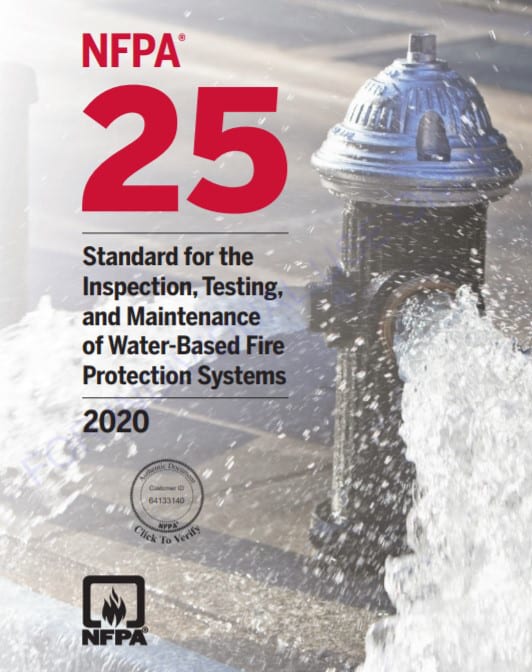
Do 2020 NFPA 25 requirements apply to my fire protection system?
NFPA 25 sets the minimum guidelines for the inspection, testing, and maintenance (ITM) of water-based fire protection systems, including sprinkler, standpipe, fixed water spray, private fire hydrant, water mist, and foam water systems. It also covers related equipment like private fire service mains and appurtenances, fire pumps, water storage tanks, and valves that control system flow.
NFPA 25 2020 revises the 2017 edition of the same standard. While some authorities having jurisdiction (AHJs) adopt new NFPA standards on Jan. 1 of the year they’re issued, others continue to use an older edition as the enforceable standard for some time.
Regardless, read this carefully: NFPA Journal explains that code makers craft the latest edition of NFPA 25 with the intent that it will always be applied by ITM professionals to ensure the highest levels of life safety. After all, ITM activities are not ultimately intended to check compliance with an installation standard—they are designed to determine if wear and tear on a fire protection system will stop it from responding during an emergency.
For this reason, code makers typically avoid making significant changes to NFPA 25 unless they are necessary to achieve life safety. Here are some key changes to the 2020 edition:
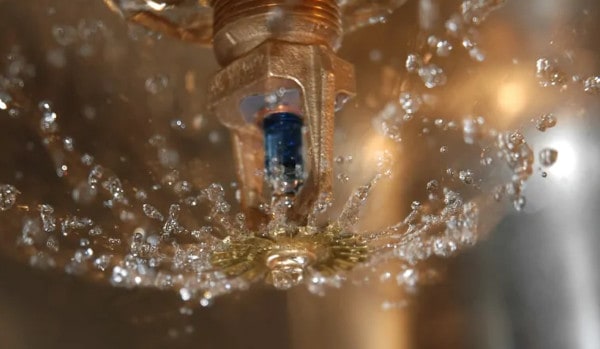
NFPA 25 2020 recognizes electric sprinklers for the first time
Perhaps the biggest addition to NFPA 25 2020 is the first-ever recognition of electric sprinklers, developed to control high-hazard fires like those that threaten warehouse storage arrangements with exposed expanded group A plastics.
While traditional sprinklers rely on a thermal response element that activates at a fixed temperature, electric sprinklers are triggered by an “intelligent” electronic sensing and control system that sends an electric signal to an actuator. The actuator releases the mechanism holding back the water, allowing it to flow through the sprinkler head onto the fire.
Here’s how it works: Electronic sensors attached to each sprinkler head serve as the initiating device by detecting the rate of temperature rise. When a fire is detected, the sensors send a signal to a control panel equipped with fire detection and sprinkler selection algorithms. Once multiple sensors validate a fire, the panel’s algorithms intelligently select and activate an array of sprinklers to “surround and drown” the blaze, creating a more specific and intentional approach to suppressing flames.
NFPA Journal states that electric sprinkler systems detect fires faster than sprinklers that rely on fixed-temperature thermal response elements—a key advantage in high-hazard situations as water is delivered faster. They also maximize the amount of water applied to burning materials and pre-wet potential adjacent unburned fuels to stop lateral fire spread.
Ultimately, Sprinkler Age reports that fewer sprinklers are activated, and water use is more efficient when electric sprinklers are used to douse high-hazard fires. However, the innovation comes with a price—some industry sources estimate that installing electric sprinklers can double the cost of protecting a facility.
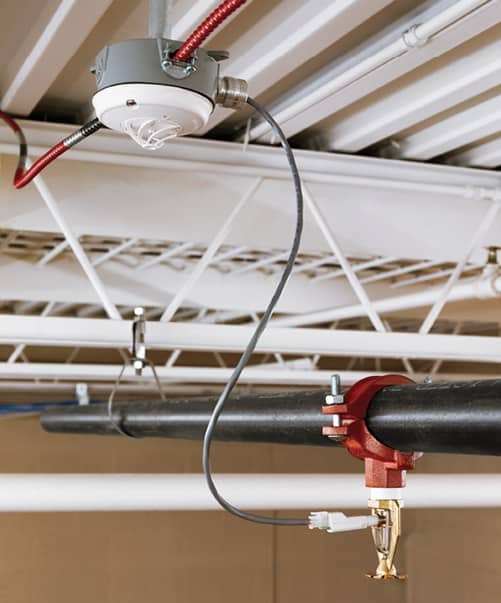
NFPA 25 (3.3.42.6) defines electronically operated sprinklers as “a sprinkler that is equipped with an integral means of activation using electricity.” It also adds ITM requirements that lean heavily on manufacturers’ guidelines for ITM activities related to the sprinkler portion of the device. ITM activities for the detection element fall under the 2019 edition of NFPA 72: National Fire Alarm and Signaling Code.
From the 2020 edition of NFPA 25
5.3.2.1 Electrically operated sprinklers shall be tested in accordance with the manufacturer’s requirements.
5.3.2.2 The testing of the electronic actuation and supervision shall be in accordance with the manufacturer’s requirements and NFPA 72 or the local fire alarm code.
5.4.1.8 Electrically operated sprinklers shall be maintained in accordance with the manufacturer’s requirements.
NFPA 25 2020 permits automated ITM technology that simulates water flow
There will always be a need for onsite ITM performed by human inspectors. But thanks to the emergence of automation, it’s no longer necessary for a person to be physically present at a property to perform some activities required by NFPA 25.
Instead, facilities can be equipped with devices that can be controlled remotely – increasing upfront costs for property owners but potentially reducing ITM expenses over the life of a system. Automated testing can also enhance safety, making it simple to test sprinkler system components more frequently.
The 2017 edition of NFPA 25 introduced the first-ever requirements permitting automated inspection and testing of water-based fire protection systems. NFPA 25 2020 expands those requirements to cover new automated testing technology, such as a flow switch capable of simulating water flow.
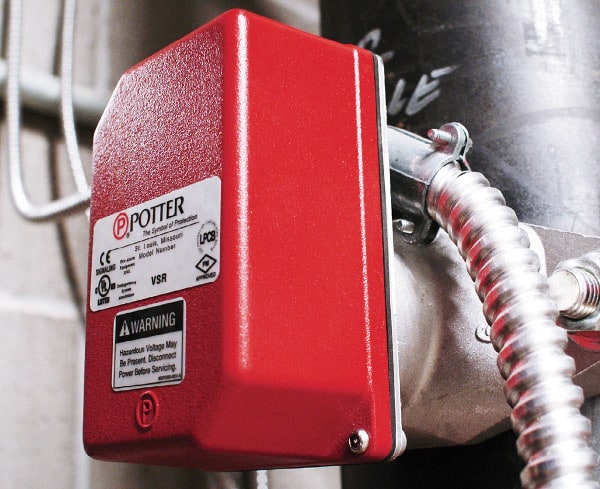
Flow switches, or waterflow detectors, detect water flow greater than 10 gallons per minute through fire sprinkler piping caused by a leak or activated sprinkler head. They often have a paddle that triggers a switch that sends a signal to an alarm panel and bell. By simulating water flow, the automated device can identify whether any paddle or other detection component is present and attached to the flow device without physically flowing any water.
In addition to reducing the time and cost associated with testing multiple flow switches in a facility, this device can help conserve water and reduce corrosion in dry sprinkler systems by not introducing water into pipes unnecessarily.
From the 2020 edition of NFPA 25
4.6.6.4.1 Automated testing equipment that does not discharge water for a test shall be permitted except as required in 4.6.6.4.2.
Section 4.6.6 of NFPA 25 requires all automated inspection and testing equipment to meet the intent of the test performed if a person were onsite. Among the automated devices that previously fit NFPA 25 requirements are automatic and remotely operated valves, temperature sensors, ultrasonic transducers for inspecting pipes, cameras used for observation, and auxiliary pumps for circulating water.
Section 4.6.6 also ensures that automated equipment is listed for the specific test with two exceptions: devices that aren’t subject to system pressure or integral to the operation of the system during a fire event.
The section also mandates that the failure of an automated piece of equipment can’t impede the ability of the fire protection system to function unless it’s equipped with a supervisory signal that can immediately identify issues. Audible signals must also occur if a component or system fails an automated test.
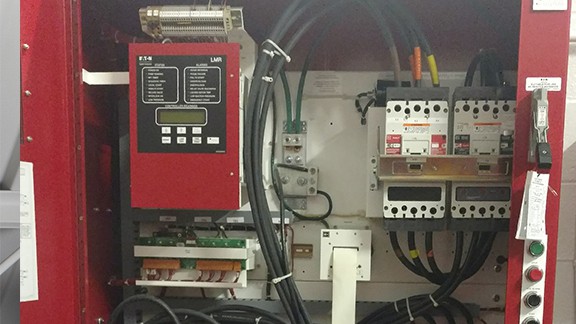
NFPA 25 2020 enhances safety by stopping inspectors from opening energized fire pump controllers
Electrical safety can never be taken lightly—and with an average of 440 volts powering their systems, energized fire pump controllers can pose an enormous risk to ITM professionals. After much debate, the NFPA 25 technical committee concluded that the benefit of opening an energized controller to take voltage and ampere readings or check connections does not outweigh the risks of a possible arc flash or shock exposure for inspectors.
NFPA previously issued a tentative interim amendment (TIA 17-2) to the 2017 edition of NFPA 25 that limited the opening of electric-motor-driven fire pump controllers. TIAs, however, are only effective between editions of NFPA standards, giving code makers time to subject the issue to the procedures of the standards-making process.
NFPA 25 2020 officially stops inspectors from opening electric-motor-driven fire pump controllers unless they can be safely de-energized. Many modern controllers do, however, feature an external digital readout screen, so voltage and ampere readings can be taken if the equipment can’t be opened.
The new standard also recognizes a new evolution of controllers where a disconnect switch is located in a separate rated sub-cabinet within the controller enclosure. This isolation switch de-energizes the controller so it can be opened, and ITM can be performed safely.
But when manufacturers don’t add the disconnect switch, the fire pump controller often can’t be isolated without shutting off power to the building, which code-makers recognize is impractical (A.8.1.1.2.2.1). In those cases, if other testing indicates a problem may exist with the fire pump’s electrical system, an electrician should be brought in.
From the 2020 edition of NFPA 25
8.1.1.2.2.1* Electrical connections shall be inspected annually and repaired as necessary to the extent that such work can be completed without opening an energized electric-motor-driven fire pump controller.
8.1.1.2.2.2* The isolating switch in the fire pump controller that is located in a separate compartment from the other controller components shall be permitted to be used to meet the requirement of 8.1.1.2.2.1.
NFPA 25 2020 also now clearly states that NFPA 70E: Standard for Electrical Safety in the Workplace or an approved equivalent must be followed should any work need to be conducted on electrical equipment. NFPA 70E requirements include special training and personal protective equipment (PPE) for people working on electrical systems. In the “Electrical Safety” section (4.9.6), the new code reads:
From the 2020 edition of NFPA 25
4.9.6.2* At a minimum, the provisions of NFPA 70E or an approved equivalent shall be applied.
NFPA 25 2020 offers clearer guidance for handling sprinkler product recalls
NFPA 25 has long made it clear that property owners are responsible for maintaining fire protection systems at their facilities. But previously, there’s been no formal process for identifying and addressing recalled fire sprinkler system products that could cause sprinklers to fail—transforming recalls into a potential liability nightmare.
A product recall is a request from a manufacturer, importer, distributor, wholesaler, and/or retailer to return a product after safety issues or product defects are discovered that might endanger the consumer or put the maker/seller at risk of legal action.
The most extensive fire sprinkler product recall occurred between 2001 and 2007. More than 35 million sprinkler heads—one of the largest replacement programs in the history of the Consumer Product Safety Commission—were recalled and replaced at no charge after O-ring water seal failures were linked to a deadly fire at a nursing home.
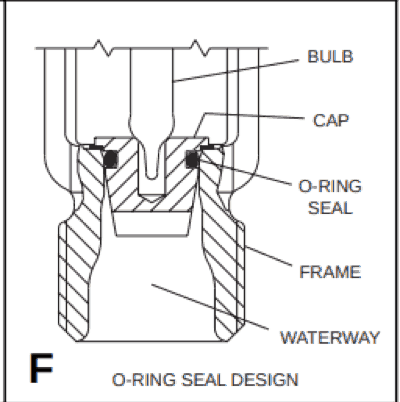
NFPA 25 2020 establishes a foundation for handling recalled fire sprinkler system products. It also spreads the responsibility for addressing recalled fire sprinkler products between contractors, facility managers, inspectors, and building owners.
From the 2020 edition of NFPA 25
4.1.5.1.1* Upon discovery of any component and equipment under recall or replacement programs by the owner’s maintenance personnel, designated representative, or contractor, the owner shall be notified in writing.
When it comes to recalls, a major source of confusion has stemmed from the lack of a master list that makes it crystal clear which products are affected. Section A.4.1.5.1.1 now points property owners toward www.nfsa.org as a sample reference source.
The National Fire Sprinkler Association (NFSA) has built a growing list of recalled products that anyone can access by simply clicking “Product Advisory” on its home page. While NFSA emphasizes that it does not guarantee the completeness of its list, it offers a comprehensive, single location for links to manufacturers offering information about recalls and voluntary replacement programs.
From the 2020 edition of NFPA 25
4.1.5.1.2* The property owner or designated representative shall correct, remedy, repair, or replace components and equipment under recall or replacement program.
A.4.1.5.1.2 expands further, explaining that a “remedy” for equipment under recall includes entrance into a program for scheduled replacement. It then instructs property owners to install replacement or remedial products per the manufacturer’s instructions and appropriate NFPA installation standards.
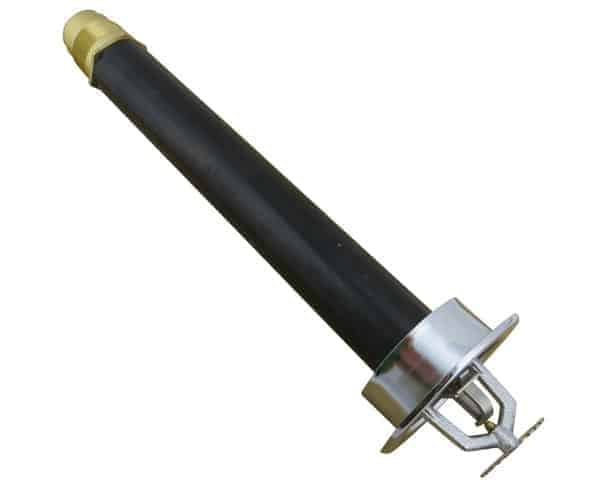
Other notable changes to NFPA 25 2020
Dry sprinkler testing interval increased
Property owners can now wait 15 years after installation before they need to laboratory test or replace dry sprinklers (5.3.1.1.1.6)—instead of the 10 required by the previous NFPA 25 edition. Retesting must still occur at 10-year intervals after that. The increase in the interval is most likely a nod to the increased reliability of dry sprinklers since UL banned the use of dynamic O-ring water seals in 2003.
The rubber O-ring seals were linked to a deadly nursing home fire in 2000 that prompted one of the biggest product replacement programs in the history of the Consumer Product Safety Commission. UL testing found that corrosion or minerals, salts, or other contaminants in sprinkler water could impact O-ring water seals, causing them to fail to release as intended.
The majority of dry sprinklers manufactured between the 1960s and early 2000s contained this O-ring seal, making frequent sprinkler testing critically important. But a 2018 Sprinkler Age report states that dry sprinklers have become “extremely dependable” in the 15 years since O-rings were eliminated from dry sprinkler manufacturing, with less than 1 percent abnormal operations. With O-rings, the number of abnormal operations reached as high as 34 percent during the same period.
Dry hydrants added to Chapter 7, “Private Fire Service Mains”
In rural areas where municipal water systems aren’t available, dry hydrants supply water for fighting fires. They consist of unpressurized, permanently installed pipe with one end below the water level of a lake or pond. The other end extends to dry land and is available for connection to a pumper fire engine.
Dry hydrants should not be confused with dry barrel hydrants, also called frostproof hydrants, that are typically installed in cold-weather climates.
NFPA 1142: Standard on Water Supplies for Suburban and Rural Fire Fighting addresses dry hydrant requirements. NFPA 25 2020 consolidated the ITM requirements into its standard for the first time.
From the 2020 edition of NFPA 25
7.2.2.6* Dry Hydrants. Dry hydrants shall be inspected at least quarterly and maintained as necessary to keep them in good operating condition.
Section A.7.2.2.6 explains that freezing and droughts could prompt a need for more frequent inspections.
7.2.2.6.1 Thorough surveys shall be conducted, to reveal any deterioration in the water supply situation in ponds, streams, or cisterns.
7.2.2.6.2 Vegetation shall be cleared for a minimum 3 ft (0.9 m) radius from around hydrants.
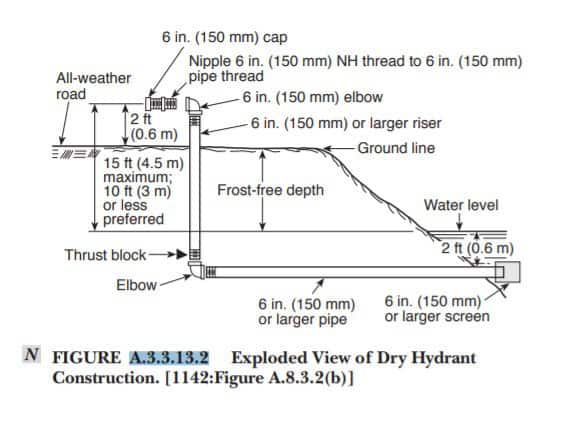
Particular attention should be paid to streams and ponds where frequent removal of debris, dredging or excavation of silt, and protection from erosion is needed. A.7.2.2.6 states that ponds used as water supplies should be maintained as free of aquatic growth as possible—even if it’s necessary to drain the water at times to control it. Helpful information for maintaining water supplies is available from such sources as the county agricultural extension agent or the U.S. Department of Agriculture.
7.2.2.6.3 The reflective material marking the hydrant and signage shall be inspected at least annually to verify that it is being maintained in accordance with 8.4.7 of NFPA 1142.
7.2.2.6.4 Hydrant risers shall be protected from ultraviolet (UV) degradation by painting or other measures.
7.2.2.6.5* The hydrants shall be flow tested at least annually with an approved pump to ensure that the minimum design flow is maintained.
Section A.7.2.2.6.5 suggests that fire departments check and test dry hydrants through actual drafting, or suction, as part of their training programs. If the testing does not produce the correct flow, the fire department should investigate the problem. It might be necessary to backflush the system to clear leaves and other debris. When backflushing a dry hydrant, pump pressures should not exceed 20 psi.
Revised requirements for fire pump annual flow testing and evaluation
Concerns over water waste in areas of drought prompted the NFPA 25 technical committee to authorize new research into its testing requirements for the 2020 edition. Under particular scrutiny: annual flow tests, which can waste substantial amounts of water.
The test is vital to ensuring that the sprinkler system and its water supply will be available when needed. But the NFPA 25 technical committee is aware of concerns over water usage and has worked over the last few revision cycles to limit the amount of water discharged on the ground.
NFPA 25 2020 offers multiple revised requirements for fire pump annual flow tests that address water waste and other concerns, as well as revised requirements for the evaluation of results. For instance, fire pumps that fail to provide maximum system demand during flow testing are now deemed impairments instead of deficiencies (8.3.7.2.4)—requiring property owners to implement the extensive impairment procedures in Chapter 15 until the issue is fixed. Impairments are the most serious issues that can befall a fire protection system, meaning that all or part of the system is out of order and won’t function properly until it’s repaired.
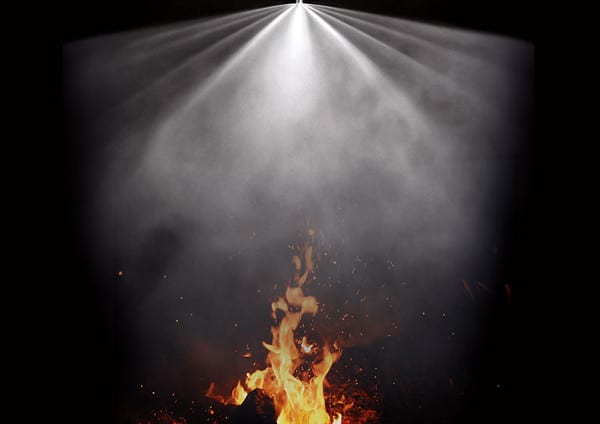
New ITM requirements in Chapter 12, “Water Mist Systems”
Water mist systems are a relative newcomer to fire protection, with the first edition of NFPA 750: Standard on Water Mist Fire Protection Systems debuting in 1996. Growing concerns over the safety and environmental impact of gaseous fire extinguishing agents have helped water mist systems gain market share. Their popularity spiked after the manufacturing of Halon, a widely used gas agent, was banned by the U.S. Environmental Protection Agency.
Water mist systems can be pricey, however, so they are most commonly found in structures with low water pressure or concerns about heavy water damage. They are also popular in the maritime industry, enabling cruise ships to store less water.
NFPA 25 2020 reflects the growing popularity of water mist fire protection systems by significantly expanding the minimum ITM requirements in Chapter 12. New guidelines include code that addresses impairments and Table 12.1.1.2, which is used to determine the minimum required frequencies for ITM activities. New requirements also address ITM for other system components, including:
- Strainers and filters
- System piping, tubing, and fittings
- Hangers, braces, and supports
- High-pressure storage pressure cylinder assemblies (water and gas)
- Pneumatic valves and tubing
- Additive storage cylinders
- Water recirculation tanks
- Pneumatically operated standby pumps
- Water supply
- Enclosures and interlocks
- Control equipment
- Pneumatic valves
- Fire pumps and drivers
- Hoses
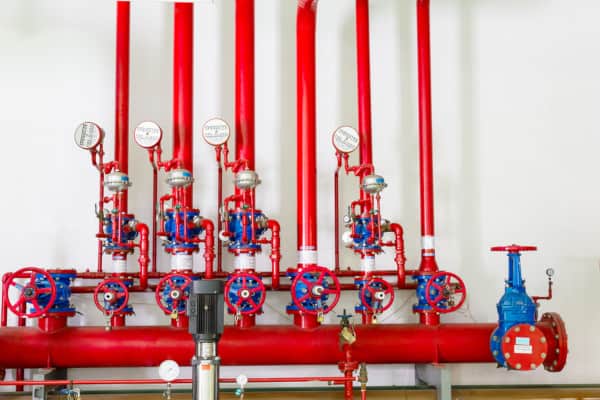
New ITM requirements in NFPA 25 2020 aim to ensure the successful operation of fire protection systems
Since 1992, NFPA 25 has set minimum requirements for inspection, testing, and maintenance aimed at ensuring the successful operation of fire protection systems. NFPA 25 2020 builds upon that goal, establishing guidelines that ensure new technologies live up to their potential to enhance life safety.
Need to keep your water-based fire protection system up to date? Browse our selection of fire sprinklers and system components, FDCs and accessories, pipe components and accessories, sprinkler installation tools, fire safety signs, and more.
This blog was originally posted at blog.qrfs.com. Check us out at Facebook.com/QuickResponseFireSupply or on Twitter @QuickResponseFS.



Thank you for your educational presentation. Very helpful to a layman’s point of view.